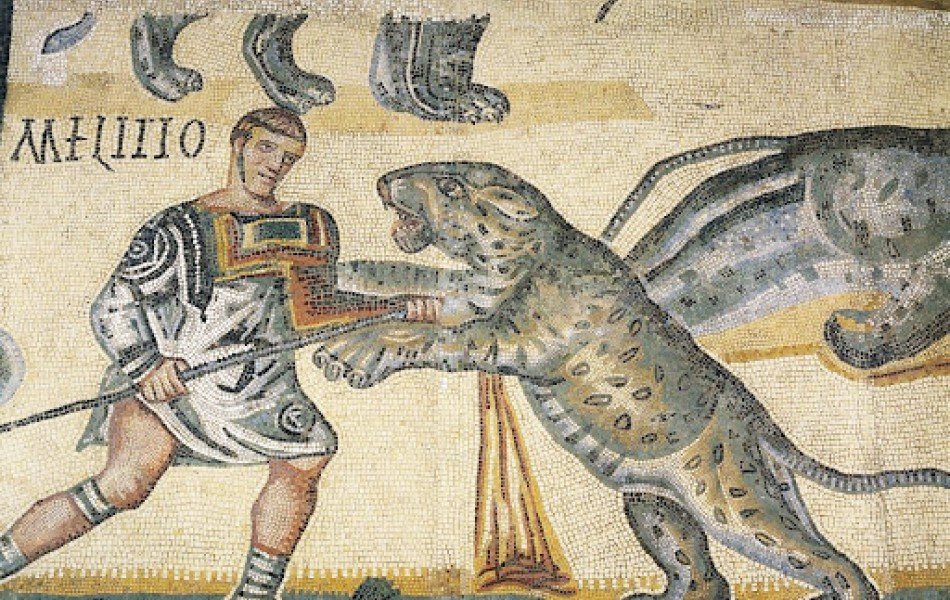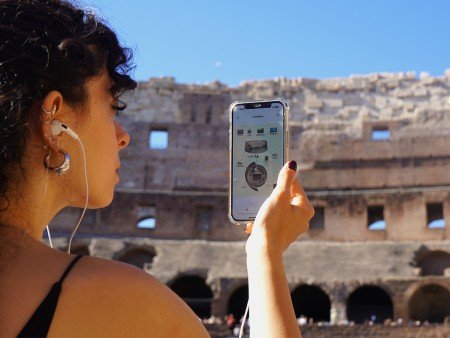Crocodiles, bears, lions, and elephants in the Colosseum arena to enthrall the Romans
The gladiatorial hunts against ferocious beasts in Rome's Colosseum: spectacles of men against animals, blood and power

04 October 2024
Rome Travel GuideThe spectacular animal hunts in the Colosseum
In the first century CE. Rome is the center the known world, and the whole world converges on Rome. Men from the ends of the world and beasts from every corner of the empire all converge there, in the sands of the Colosseum. Among the Roman people's favorite spectacles are the clashes between men and beasts: they call them venationes, hunts.
Many itineraries cover the Colosseum, all telling a piece of history. But our Colosseum Tours reveal the origin, evolution, and thrill of history through the most significant human and social stories
Thrilling Venationes: Crocodiles, Bears, Elephants, and Leopards in the Arena
The earliest known venatio, given in Rome, dates back to 186 B.C. and was organized by M. Fulvio Nobiliore, conqueror of Aetolia: we are not sure for what reason, but initially at the venationes African animals are banned. These spectacles were meant to be a unique experience for those who, by going to the arena, could travel with their own eyes to otherwise unreachable places in the world. The animals that over time fought in the venationes really could represent the entire ancient world: lynxes from Gaul, tigers from India, crocodiles and hippos from Egypt, lions from Greece, leopards from Africa, and many others such as bears, elephants, and horses were the stars of this ruthless spectacle. Imagine the eyes of a boy waiting to witness his first venatio, he hears an exotic, dangerous, trembling sound: to hear only its verses, the heart beats and the imagination runs, runs fast. The beast makes its appearance and the thousand emotions of the audience unite in one roar: sinuous in cold scales, the crocodile enters. This is the scene we can imagine when in 58 B.C. M. Aemilius Scaurus brings crocodiles and hippos from Egypt to Rome.
The main characters of the hunts: even ostriches and giraffes
The main figures in these spectacles, besides the animals, were the venatores or those who would face the beasts, commonly known as gladiators, and the bestiarii, those who handled the animals. At the time of the Colosseum, these gladiators were rather lightly armed: a thick tunic toughened only in some parts of the body and a spear were enough (according to the organizers) to defend themselves against killer animals. One famous gladiator who participated in the opening games of the Colosseum was Carpophorus.
But were all the animals in the venationes fierce beasts?
No, indeed! The animal shows included animals such as giraffes and ostriches! But all these beasts, once the show was over, what happened to them? At the end of the venatio, the carcasses of the animals were not completely wasted: if the magistrate wanted, donations could be made to the crowd, or in other cases they became food for other fairs. In some cases, parts of the animals could even end up in imperial kitchens:
Galen, the famous physician of Ancient Rome, speaks of an elephant's heart that ended up in the imperial kitchens, for the emperor Commodus
Criticism to Venationes in Ancient Rome: Tears of the public for the horror
Although this spectacle enjoyed enormous success, there was certainly no shortage of detractors, given its cruelty. Seneca in his Epistles to Lucilius bitterly criticizes the spectacles and the crowd, stating that they make the crowd insensitive to violence and asserts that in order to make the animals enrage the bestiarii would torture or kill the cubs, so as to make the beasts violent. Pliny the Younger wrote his Epistles to Calvisio affirming his disinterest in the cruel circus games; there was even an episode of collective empathy in 55 B.C, when Pompey organized venationes with elephants and the latter “having lost all hope of escape sought to procure the sympathy of the audience with indescribable mimicry” and even “succeeded in arousing in the spectators so deep an emotion, that those [...] all stood up in tears, hurling at Pompey a series of curses.” The venationes were an opportunity for the Roman ruling class to show their people Roman dominance over the world, constructing scripts in the amphitheater of the most exotic locales and bringing in animals as pure tools of social affirmation for the organizers. Venationes, however much they appear to our eyes and even to those of some Romans of the time as a pure spectacle of death, were part of the shows in the arenas of the empire still for the following centuries and we can say that, if only briefly, they survived the Western empire: the last known venatio in fact is the one given by Theodoric in the Colosseum in 523 AD.
Our categories:
You may also be interested ...

Guided Audio Tour Colosseum with Roman Forum and Palatine Hill
Private tour
Discover the secrets of the Colosseum and Ancient Rome independently with our immersive Colosseum guided audio tour, rich in image and content
starting from: € 51 € 42

Domus Aurea Tour with VR Experience: The one-of-a-kind Architecture of Imperial Rome
Small group tours
(15)
Step into the vast frescoed halls of Nero’s Domus Aurea, both east and west wings. Enjoy the immersive 3D reconstruction
starting from: € 85 € 61